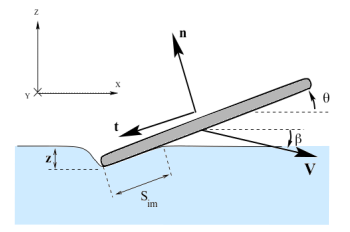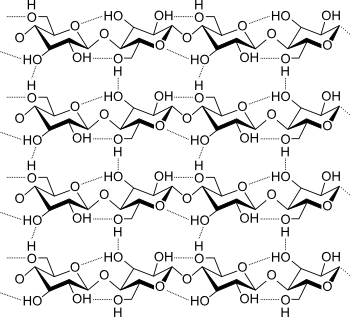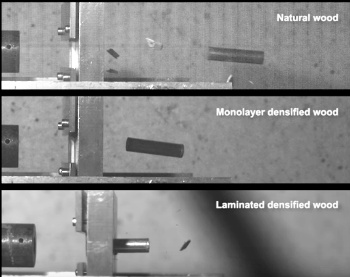Strong Wood
January 14, 2019
Once again I'm revealing my age when I recall a popular
song from my
teenage years,
Surf City by
Jan and Dean, released in 1963.[1] This song was popular in my inland
Eastern United States hometown despite it's being a 5-6 hour trip from the nearest desirable
surfing location,
Long Beach Island, New Jersey. It might have been because of its "two
girls for every
boy"
catch phrase.

Physics of a stone skipping on water.
There aren't any arXiv papers about surfboarding, but there are a few on the mechanism by which flat stones will skip across water when thrown at a proper angle.
In this diagram, the stone hits the surface at a velocity V, an incidence angle β, and a tilt angle θ. The stone's trailing edge is immersed to a depth z, causing a contact surface area Sim.
(Modified arXiv figure from ref. 2.[2] Click for larger image.)
Surf City also mentions a type of
automobile body type called a
woodie. As its name implies, some of the automobile body was
wood. As
manufacturing techniques changed, the wood was simulated in
vinyl plastic. Today, wood is not used in automobiles for both
safety and
fuel economy reasons, but wood has been used as a
structural material since
prehistoric times, and it's used today for making things from
baseball bats to
buildings.
Wood is a combination of several
chemical compounds, but its major constituent is
cellulose, a
crystalline polymer that comprises about 42% of its
weight.
Hydrogen bonding between straight,
parallel chains of cellulose polymer gives wood its
strength, as shown in the figure.

Polymer chains of cellulose.
The polymer chains are straight, and the strength of wood derives from hydrogen bonding, not the coiling or branching found in other polymers.
(Illustration by Luca Laghi, via Wikimedia Commons.)
The strength of wood has something in common with the highly optimized creation of the
gas turbine blades used in
jet engines. These blades are
directionally-solidified so that the
polycrystalline grains of their
alloy align to give them additional strength. Wood has a
texture, its
wood grain, along its
growth direction. This gives
trees the strength they need to resist high
winds and other insults. This also means that the wood that we
harvest has different
mechanical properties in different directions. My
father, who was a
carpenter, had a
crosscut saw designed to cut
lumber across its grain, which is a difficult cut.
Wood is weaker
longitudinal to the grain, and it's much stronger in the
transverse direction across the grain. This isn't a problem when constructing a typical
wood-frame building, since the
wall studs are cut along the length of the tree, but it is a problem when an
isotropic strength is needed.
Immanuel Nobel (1801-1872), who was the
father of
Alfred Nobel of the
eponymous Nobel Prize devised a method in the
mid-nineteenth century to create wooden sheets with strength in all directions.

A sheet of plywood used as a shelf material. This sheet rests on a "2x4" pine stud frame.
The five layers of this 3/4-inch thick laminate, known as C/D grade plywood, can be seen.
(Photo by the author)
Nobel manufactured
laminated boards, now called
plywood, made from several thin layers of wood that were bonded together in a cross-grain arrangement in which alternate layers have their grain aligned
perpendicular to each other. This same technique can be applied at the
nanoscopic level, since cellulose
nanocrystals are straight and
needle-shaped with highly
anisotropic mechanical properties. They have an estimated
Young's modulus along the [001] (c-axis) of 206
GPa, which is comparable to that of
steel, while their Young's modulus along [100] (a-axis) is estimated to be only 19 GPa.
Just as
metallurgists have
chemically-enhanced the
elemental metals mined from
ores by creation of
alloys,
scientists have been devising methods to enhance the strength of wood. One early example of such
research appears in a 1944
paper in
Industrial & Engineering Chemistry.[3] Earlier this year, a team of
materials scientists and
engineers from the
University of Maryland (College Park, Maryland), the
USDA Forest Service (Madison, Wisconsin), the
University of California Merced (Merced, California), and
Northeastern University (Boston, Massachusetts) published a chemical bath method that renders wood into a material that's stronger than steel.[4-5]
While wood has been extensively used as a structural material for construction of
furniture and small buildings, its strength and
toughness are not adequate for advanced structures and applications.[4] Wood has been enhanced in the past through treatment with
ammonia,
steam, or
heat, such treatments result in just a small
densification, and wood treated by such means tends to lose its dimensional stability in
humid environments.[4] Such treatments have resulted in an increase in strength by just a factor of three to four.[5]
The recent advance in wood treatment that results in a more than tenfold increase in strength, toughness and
ballistic resistance comes from the simultaneous application of chemicals, high
temperature, and
pressing.[4-5] The treated wood is also dimensionally stable.[4] The treatment process involves a first step of
boiling in an
aqueous mixture of
sodium hydroxide (NaOH) and
sodium sulfite (Na2SO3) that results in a partial removal of
lignin and
hemicellulose from the natural wood.[4] This is followed by hot-pressing at 100
°C for a day that leads to the total collapse of
cell walls and a densification of the natural wood by a factor of three by alignment of cellulose
nanofibers.[4-5] The chemicals are used also in conversion of
wood pulp to
paper.[5]
This technique was proven for a variety of wood
species, and it resulted in a specific strength higher than that of most structural metals and alloys.[4] The
density increased from 0.43
g/cc to 1.3 g/cc.[5] This makes it too dense to float on water.[5] The partial removal of lignin by the chemical process might make the processed wood susceptible to
bacterial or
fungal attacks.[5]
scanning electron microscopy showed that the process crushes the cellulose tubes, forcing them to
crumple and interlock, so all the nanofibers are aligned in the growth direction.[6]

Ballistic test of a strengthened wood laminate.
Natural wood has limited impact resistance, but the impact resistance is improved in a single sheet of strengthened wood.
A 46 gram steel projectile fired at 30 meters per second was stopped by a 3 mm thickness five-layer strengthened wood laminate.
(Still image from a YouTube video by Liangbing Hu/NPG Press[8])
Projectiles were fired at wood specimens from a ballistic
air gun, and 3 mm thickness five-layer laminates were able to stop a 46
gram steel projectile fired at 30
meters per second (see figure).[6] This is about the impact that an automobile would have in a
collision; so, there might be a revival of the woodie body type.[6] Removing just the right amount of lignin is important for maximizing performance. The wood was strongest when about 55% of the lignin remains.[6] This material would be an
environmentally-friendly alternative to plastics, and the processing chemicals are relatively
benign.[6-7] Such materials might be an alternative to steels or alloys in buildings and
bridge construction, and as a material to make lightweight vehicles for better
fuel efficiency.[7]
Although the typical limit for the size of a wooden structure is three
stories (about 45
feet), higher structures are now being built with engineered wood, such as
cross-laminated timber.[9] In 2012, a 90 foot wood building was constructed in
Prince George, British Columbia, Canada, there's a 34 story wood tower planned for
Stockholm, Sweden, and an
architect's study shows that 42 stories are possible.[9] The
energy savings between wood and other materials is considerable. Per weight,
brick needs four times the energy than wood to be made into a building material,
concrete five times, steel 24 times, and
aluminum 126 times. In the building itself, wood is a five times better
thermal insulator than concrete and 350 times better than steel.[9] A proposed
Tokyo skyscraper, built mostly of wood with just 10% steel, would be 70 stories (1,148 feet) tall.[10]
References:
- Jan and Dean, "Surf City," YouTube Video by joltinjack.
- Lydéric Bocquet, "The physics of stone skipping," American Journal of Physics, vol. 71, no. 2 (January 10, 2003), https://doi.org/10.1119/1.1519232. Also available at arXiv.
- Louis Klein, Henry Grinsfelder, and S. D. Bailey, "Comparison of Methods for Improving Wood," Industrial & Engineering Chemistry, vol. 36, no. 3 (March, 1944), pp 252-256, DOI: 10.1021/ie50411a015.
- Jianwei Song, Chaoji Chen, Shuze Zhu, Mingwei Zhu, Jiaqi Dai, Upamanyu Ray, Yiju Li, Yudi Kuang, Yongfeng Li, Nelson Quispe, Yonggang Yao, Amy Gong, Ulrich H. Leiste, Hugh A. Bruck, J. Y. Zhu, Azhar Vellore, Heng Li, Marilyn L. Minus, Zheng Jia, Ashlie Martini, Teng Li & Liangbing Hu, "Processing bulk natural wood into a high-performance structural material," Nature. vol. 554 (February 8, 2018), pp. 224ff., doi: 10.1038/nature25476.
- Peter Fratzl, " Wood made denser and stronger," Nature. vol. 554 (February 8, 2018), pp. 172-173, doi: d41586-018-01371-0.
- Mark Zastrow, "Crushed wood is stronger than steel," Nature News, February 7, 2018.
- Maria Temming, "Superdense wood is lightweight, but strong as steel," Science News, February 7, 2018.
- Ballistic test, YouTube Video by Liangbing Hu/NPG Press, Feb 1, 2018.
- Clay Risen, "The World's Most Advanced Building Material Is... Wood," Popular Science, February 6, 2014.
- Elle Hunt, "Plyscraper city: Tokyo to build 350m tower made of wood," The Guardian (UK), February 16, 2018.
- Brian Gallagher, "The Case for Making Cities Out of Wood," Nautilus, October 3, 2018.
- Tall Building Information & Resources, Council on Tall Buildings and Urban Habitat
Linked Keywords: Song; adolescence; teenage years; Surf City (song); Jan and Dean; Eastern United States; hometown; surfing; Long Beach Island, New Jersey; girl; boy; catchphrase; catch phrase; physics; stone; skip; skipping; water; arXiv; scientific literature; paper; surfboarding; mechanism; throwing; thrown; angle; velocity; tilt; surface area; automobile; car classification; body type; woodie (car body style); wood; manufacturing; polyvinylidene fluoride; vinyl; plastic; safety; fuel economy; structural material; prehistory; prehistoric times; baseball bat; building; chemical compound; cellulose; crystal; crystalline; polymer; weight; hydrogen bonding; parallel; chain; ultimate tensile strength; branching; Luca Laghi; Wikimedia Commons; gas turbine blade; jet engine; directional solidification; directionally-solidified; polycrystalline grain; alloy; texture; wood grain; >growth; direction; tree; wind; harvest; mechanics; mechanical properties; father; carpenter; crosscut saw; lumber; longitudinal; transverse direction; framing (construction); wood-frame building; wall stud; isotropy; isotropic; Immanuel Nobel (1801-1872); Alfred Nobel; eponym; eponymous; Nobel Prize; 19th century; plywood; shelf (storage); material; dimensional lumber 2x4; pine; laminate; C/D grade plywood; lamination; laminated board; plywood; perpendicular; nanoscopic scale; nanocrystal; needle-shaped; anisotropy; anisotropic; Young's modulus; pascal (unit); GPa; steel; metallurgy; metallurgist; chemistry; chemically-enhanced; chemical element; elemental; metals; mining; mined; ores; alloy; scientist; research; Industrial & Engineering Chemistry; materials science; materials scientist; engineer; University of Maryland (College Park, Maryland); United States Forest Service (Madison, Wisconsin); University of California Merced (Merced, California); Northeastern University (Boston, Massachusetts); furniture; toughness; ammonia; steam; heat; density; densification; humidity; humid environment; ballistic; ballistic shield; temperature; hot isostatic pressing; boiling; aqueous solution; mixture; sodium hydroxide (NaOH); sodium sulfite (Na2SO3); lignin; hemicellulose; celsius; °C; cell wall; nanofiber; wood pulp; paper; species; kilogram per cubic meter; g/cc; bacteria; bacterial; fungus; fungal; scanning electron microscopy; crumpling; crumple; impact resistance; gram; projectile; meters per second; Liangbing Hu; air gun; traffic collision; environmentally-friendly; toxicity; benign; bridge; fuel efficiency; storey; story; foot (length); feet; cross-laminated timber; Prince George, British Columbia, Canada; Stockholm, Sweden; architect; study; energy conservation; energy saving; brick; concrete; aluminum; thermal conductivity; thermal insulator; Tokyo; skyscraper.